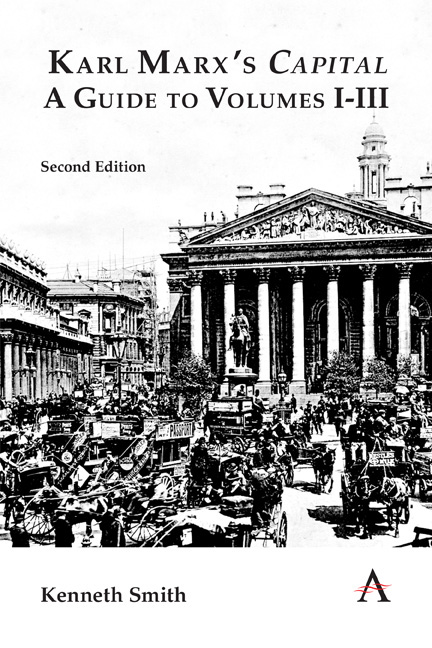Book contents
- Frontmatter
- Dedication
- Contents
- Preface to the Second Edition
- Introduction
- Part I The Development of the Capitalist Mode of Production
- Part II The Capitalist Mode of Production
- Part III The Underdevelopment of the Capitalist Mode of Production
- Part IV The Value Theory of Labour
- Conclusion to Part IV
- Conclusion
- Appendix: On Social Classes
- Notes
- Bibliography
- Index
- Frontmatter
- Dedication
- Contents
- Preface to the Second Edition
- Introduction
- Part I The Development of the Capitalist Mode of Production
- Part II The Capitalist Mode of Production
- Part III The Underdevelopment of the Capitalist Mode of Production
- Part IV The Value Theory of Labour
- Conclusion to Part IV
- Conclusion
- Appendix: On Social Classes
- Notes
- Bibliography
- Index
Summary
In Chapter 10 of this study I argued that the circuit of industrial capital M–C…P…C’–M’. M–C…P…C’–M’. M–C…P…C’–M’ etc. (or M–C… P…C’–M’–C’…P…C”–M”–C”…P…C”’–M’” etc., as this would be in the case when reproduction on a progressively extending scale took place) is interrupted at the money stage (M’–M, or M minus m), such that (a) the circuit of a highly developed form of merchant's capital, M–C…P…C’–M’, becomes an independent circuit of money capital (also known as ‘finance capital’) rather than remaining a continuous and uninterrupted part of the normal circuit of industrial capital, and that (b) as a result of the dominance of merchant's capital, surplus value is withdrawn from the process of production and consumed unproductively by finance capitalists, such that reproduction on a progressively extending scale – and hence capitalist accumulation proper – does not take place. In Chapter 11, I further argued that the capitalist mode of production cannot possibly destroy itself from within – that is to say, systemically – since, any attempt to destroy itself will destroy the very thing that is supposed to be bringing about its own destruction: namely, itself. However, I also argued that the CMP is not left unaffected by this development. Rather, within the tendency that it has to destroy itself, the CMP does indeed go some way towards undermining its own conditions of existence (i.e. its fullest possible development in the form of the uninterrupted circulation of industrial capital) before the tendency it has to destroy itself is arrested. It socializes the ownership of the means of production in the form of share ownership, while leaving the control of the commanding heights of industry and finance in the hands of private interests. To the extent that this occurs the resulting mode of production is neither capitalist nor socialist, but something in between the two that might variously be described as a highly developed form of the mercantile system: finance capitalism, monopoly capitalism or managerialism. In Chapter 12, I looked at Rudolf Hilferding's writings on the circulation of money capital to see how this compared with Marx's views on this question.
- Type
- Chapter
- Information
- Karl Marx's 'Capital': A Guide to Volumes I-III , pp. 118 - 120Publisher: Anthem PressPrint publication year: 2021



